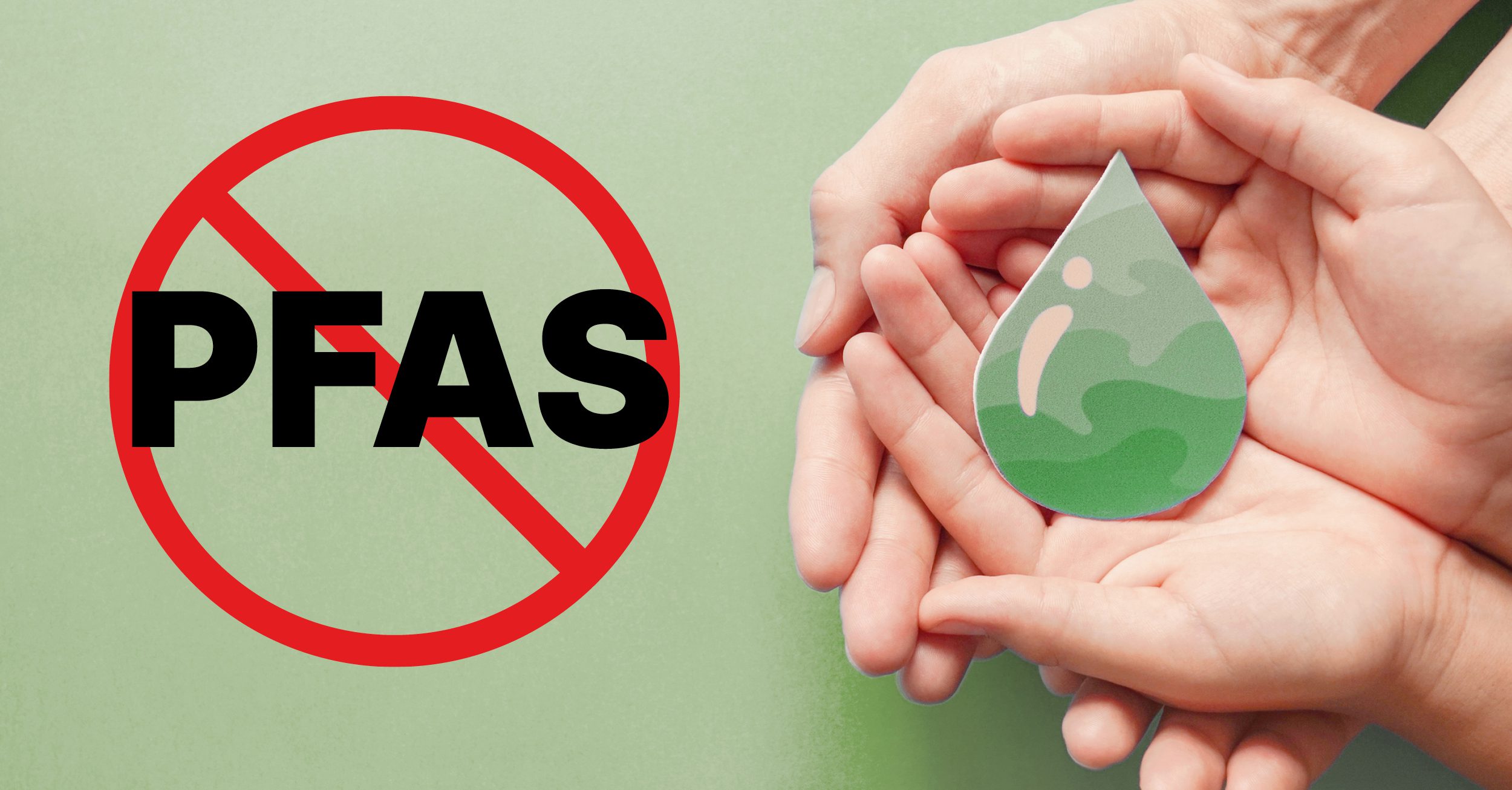What is going on with the former gold standard, which was established from the 1980s onwards by a multitude of PFAS or PFAS-like compounds, called PFCs (per- and polyfluorinated chemical substances) for short? The substances are contained in countless everyday products because some of their properties have proven to be extremely practical. In extinguishing foam, they are particularly effective in fighting class B fires (fires of liquid substances). PFAS or PFAS-like liquid substances in extinguishing foam cause close cross-linking with the surface of the burning liquid so that the flames are deprived of oxygen.
However, what has long been puzzling and thought-provoking is the fact that the fluorinated substances of the PFAS family, of which more than 4,700 are known, do not occur in nature. They are characterised by very high chemical and thermal stability and extreme longevity. Because they are not biodegradable, the substances are therefore also referred to as Eternity chemicals and accumulate in the environment in the soil, groundwater, oceans and through the food chain in almost all bio-organisms. Scientific studies are increasingly revealing their properties, which are seriously harmful to human health. The first bans and regulations have already been issued or are in preparation in the EU for certain applications.
Do we have to prepare for a farewell to the practical properties of PFAS?
Indeed, it is not always easy to say goodbye to the many positive and practical properties that PFASs unfold in many products, even if the longevity, the adverse health effects and the problem of accumulation in the environment are perceived as real. The emerging and further growing public discourse on a drastic restriction or even an EU-wide ban of PFAS or similar fluorinated substances is somewhat reminiscent of the discussions on a possible ban of CFCs (chlorofluorocarbons) towards the end of the 1980s to protect the high-altitude ozone shield. The CFC discourse ultimately led to the banning of CFCs with the effect that the "ozone hole" over Antarctica and Australia has regenerated over time and CFC concentrations in the atmosphere are slowly decreasing. A very large potential for success in favour of a sustainable environment is offered by the development of similarly creative and target-oriented solutions for the replacement of PFAS with fluorine-free products and processes. Here, Jockel shows a clear path with the Green Generation.
Are fluorine-free substitutes for PFASs at all possible in favour of sustainability?
As mentioned at the beginning, PFAS and related per- or polyfluorinated substances have many desirable properties that substitute products should also have in order to be accepted as quickly as possible in favour of a sustainable environment. Whether it will be possible to find an environmentally friendly and cost-effective substitute to produce all the desired properties cannot yet be fully answered.
We at Feuerschutz Jockel are mighty proud of the fact that we reacted early to the environmental problem with PFAS in firefighting foam and have been producing fluorine-free alternatives in favour of sustainability since 2016. Our GREEN GENERATION is based on the avoidance of fluorosurfactants and thus means turning away from per- and polyfluorinated chemistry, so that we can mark our fire extinguishers with a special label. We have taken a pioneering role in the development of fluorine-free extinguishing foams. Interesting and further information can be found here. If a B-fire hazard is not really to be assumed, we also recommend the use of high-performance water extinguishers or water fog extinguishers in addition to fluorine-free fire extinguishers.
What PFAS regulations can be expected across the EU?
The environmental authorities of Germany, the Netherlands, Norway, Sweden and Denmark submitted a Memorandum of Understanding to the European Chemicals Agency (ECHA) in July 2021, according to which they will submit a joint restriction proposal for the entire PFAS family (> 4700 substances) by 15 July 2022.
The planned restriction proposal will cover the production, placing on the market as well as the use of the entire PFAS group. According to the Federal Environment Agency, further regulations are already in preparation.
Currently, the ban includes PFOS and PFOA as well as restrictions on PFHxS through inclusion in the REACH Candidate List (restricted substances) 2021.
The substance PFHxA, which is relevant for fire extinguishing foams and is used in the current fire extinguishing foams of German manufacturers - is to be regulated.
PFHxA practically forms the basis of the current, 6-chain extinguishing foams and is to this day current state of the technology. However, a reversal can be seen soon. It is advisable to be aware of the development regarding the classification of fire-fighting foams as "substances of concern" when selling them.
A ban on PFHxA has not yet been adopted, but is considered very likely. It is equally likely that the substance PFHxA will be included in the candidate list via REACH in the next few months.
More details can be found on the official REACH / UBA website:
What is the opinion of the Federal Environment Agency?
In its environmental magazine, issue 01/2020, the Federal Environment Agency (UBA) takes up PFAS as a main topic and clearly explains how the substances spread and accumulate in the environment, what damage they cause and how "humans and the environment" can be protected from PFAS and related substances in the future. UBA opposes the further spread of these "eternity chemicals". For more detailed information you can download the magazine here .
Rethinking is required in favour of sustainable environmental protection
Regardless of further restrictions on the production and use of PFAS and related products, we advocate the use of alternative products that are fluorine-free and sustainably protect the biosphere of our planet Earth. This applies in particular to the use of firefighting foams, which are also fluorine-free for efficient firefighting.
